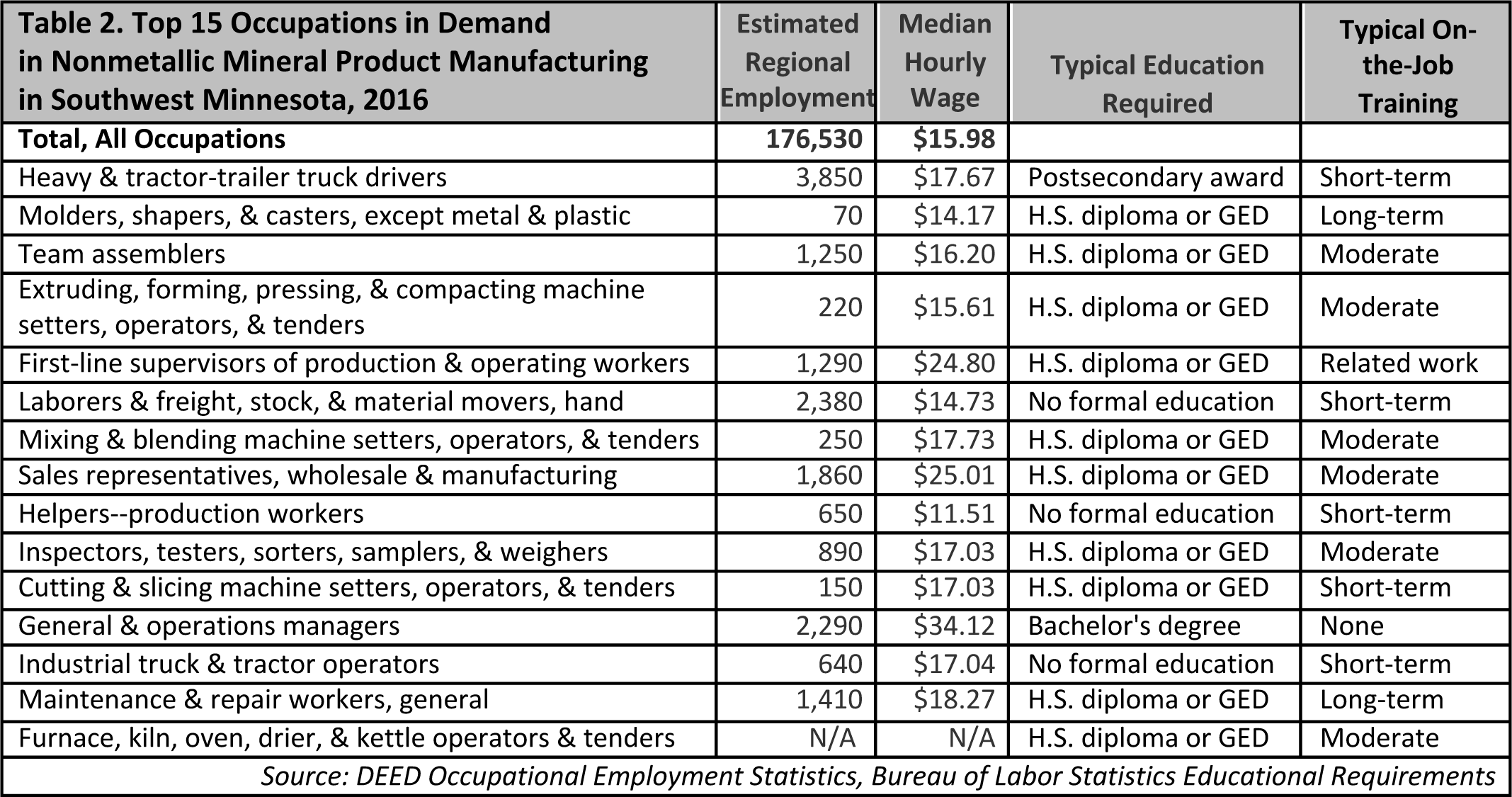 Southwest Minnesota is a national leader in agricultural production, and renewable energy.
Southwest Minnesota is a national leader in agricultural production, and renewable energy.
The region's thriving manufacturing sector includes food processing, machinery, printing, metal products, and computers and electronic products.
Want the freshest data delivered by email? Subscribe to our regional newsletters.
10/13/2016 9:54:04 AM
Luke Greiner
Part of the reason that Southwest Minnesota’s manufacturing industry finds itself on much more solid ground now than just five years ago is the emergence of the region’s nonmetallic mineral product manufacturing sector, which primarily includes cement and concrete product manufacturing. This sector gained more than 571 net new jobs from 2010 to 2015 and accounted for nearly 50 percent of manufacturing job growth in the region during the recovery.
Southwest Minnesota is now home to 33 nonmetallic mineral product manufacturing establishments, providing 1,583 jobs and over $85 million in wages in 2015. Average annual wages were just above $54,000 per year, making it the fourth highest paying manufacturing sector in the region. At that level, wages in the sector were nearly $7,000 higher than the total in manufacturing, and almost $16,000 higher than the total of all industries (see Table 1).

The industry has really grown in recent years, jumping from just over 1,000 jobs in 2010, and nearly doubling the sector’s total payroll in just five years (up from $44.2 million in 2010). The 56.4 percent increase in employment made it one of the fastest growing sub-sectors in the region; especially in the last year. Nonmetallic mineral product manufacturing gained 207 new jobs from 2014 to 2015, a remarkable 15 percent increase in the past year alone.
To that end, job seekers who are interested in working hard may be attracted by the region’s high-paying and fast-growing cement and concrete product manufacturing sectors. Jobs in high demand include: heavy and tractor trailer truck drivers; molders, shapers, and casters; team assemblers; extruding, forming, pressing, and compacting machine operators; first-line supervisors of production workers; laborers and freight, stock, and material movers; mixing and blending machine setters; and sales representatives (see Table 2).

Most of these jobs can be gained with a high school diploma or less and some on-the-job training, with the exception of truck drivers, which require a Commercial Driver’s License (CDL), and general managers, which typically require a bachelor’s degree. Most of the jobs pay relatively high wages, including 10 of the 15 that pay above the region’s median hourly wage for all occupations.
Contact Luke Greiner at 320-308-5378 or Mark Schultz.